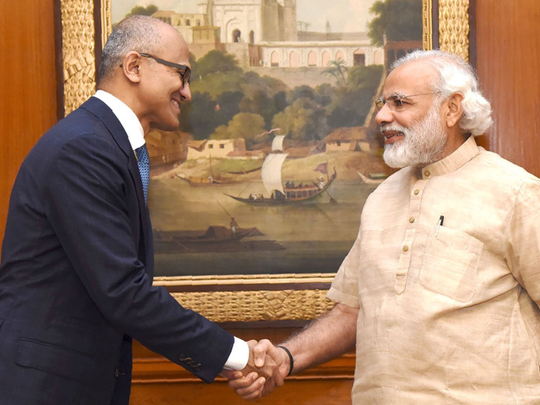
Two-years in office is certainly a landmark for any government that was elected to power after winning a historic mandate.
To celebrate the occasion, the government of Indian Prime Minister Narendra Modi organised a star-studded jamboree at the historic India Gate in New Delhi, which was scorned by many as a “pompous celebration”, an “extravaganza” that a poor country like India can ill-afford, where millions go hungry and large parts of the country is reeling under severe droughts.
The advertisements in all the leading dailies of the country were cited as a wastage of public money that could have been utilised for alleviating poverty. It was compared to the “Indian shining” slogan and the subsequent publicity drive of the Atal Bihari Vajpayee-led government that eventually suffered electoral loss in the 2004 general election. With the Bharatiya Janata Party (BJP) facing crucial state elections in 2017, in states like Uttar Pradesh, many have cited that this pageantry will lead to an electoral loss, just like the ones suffered by the BJP in state elections in Delhi and Bihar.
However, the Modi government has had its share of achievements in various sectors and had every reason to create its own platform to showcase its successes. It also shows the accountability of the government and its willingness to be judged by the very people that elected it. In the last two years, the government has made noteworthy progress on the way natural resources are allocated; subsidies are routed to the target-class, thereby laying the foundation for a social security network through its schemes like pensions for the aged and crop insurance. The government indeed exhibited its reforms intent by taking up key legislations, such as the bankruptcy code, coal, real estate and insurance bills.
Also, Modi’s relentless push to reach out to Indians living abroad has helped build a positive image of India beyond its shores. Most importantly, there hasn’t been any corruption-related case against any of the central ministers during the two years since BJP came to power at the Centre with a clear majority in 2014. Corruption in the erstwhile Congress-led United Progressive Alliance (UPA) government was the central issue in the 2014 general elections. While at least six ministers had to resign from the UPA government, and some were put behind bars, not a single minister in Modi’s government has been indicted in scams so far.
The Congress party has scoffed at the celebrations, questioning what has changed? The truth is, many things have and they only highlight the failures of the erstwhile Congress government even more. In a way, the current government symbolises all that former prime minister Manmohan Singh’s regime had failed to achieve during its 10-year rule at the Centre.
Modi, in his speech at the two-year anniversary celebrations, euphemised the lack of vision that the Manmohan government had and most importantly the lack of control that Manmohan as prime minister had over the establishment.
The flurry of literature that the Congress party bombarded the media with, trying to counter the claims of achievements by the Modi government, was no less expensive and it only shows that the party has already been gripped by fear of an impending loss, though the next general elections are three years away! With defeats in the recent state assembly polls in Kerala and Assam, where the party was locked in a direct fight with the BJP, the nervousness of becoming irrelevant in national politics is fast sinking in among Congress party workers.
However, the successful running of the government for two years does not mean that Modi can wish away the challenges that lie ahead. The economy, especially the agricultural sector, is showing shoots of recovery, but the biggest challenge for the government is to control the discourse within the party and ensure that BJP ministers and parliamentarians do not shoot their mouths off, embroiling the government in juvenile skirmishes and thereby digressing from the basic goal of development.
Another challenge that could undermine the efforts of the government is passage of key legislations in parliament — especially in the Rajya Sabha (Upper House), where bills are stuck as the ruling BJP doesn’t have the numbers and with opposition Congress holding the country to ransom on issues over which it had lost the 2014 general elections. As one commentator rightly said that in 2014, India was discussing corruption of the Congress party; in 2016, people are still stuck with the same party as it keeps using the parliament to defend its wrong-doings.
For the government, the celebrations indeed mark a high point, but carrying forward the development agenda over the next three years is the biggest challenge.
Archisman Dinda is a journalist based in Kolkata, India.









